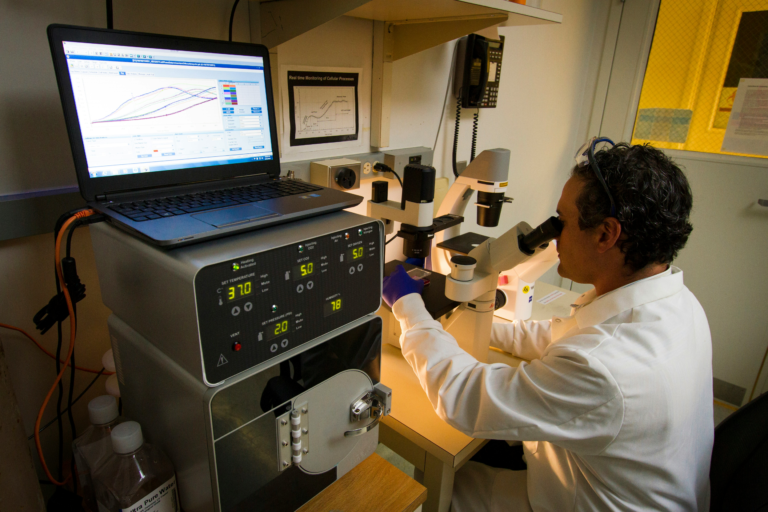Male vs. Female Rhinoplasty: Understanding the Differences
Rhinoplasty, or nose reshaping surgery, is one of the most popular cosmetic procedures, appealing to both men and women who want to enhance their appearance or improve breathing. However, male and female rhinoplasty are not one-size-fits-all procedures. Due to differences in facial structure, aesthetic preferences, and cultural beauty standards, rhinoplasty techniques and goals can vary significantly between genders.
1. The Role of Facial Structure in Rhinoplasty
The foundation of any rhinoplasty procedure is an understanding of the patient’s unique facial structure. Facial shape, bone density, skin thickness, and cartilage strength all influence how the nose appears and functions. Here’s how these elements differ between men and women:
- Male Facial Structure: Men generally have more prominent, angular features with a stronger bone structure, which supports a more pronounced nose bridge. Male noses typically have thicker skin, which can impact healing and the level of refinement possible.
- Female Facial Structure: Women’s faces tend to be softer with gentler angles. Female noses are usually smaller with finer skin, allowing for more detailed shaping and refinement. Female rhinoplasty often aims to create a nose that enhances these softer, rounded facial features.
Understanding these structural differences helps the surgeon adapt their techniques to achieve a balanced, aesthetically pleasing result that complements each patient’s natural features.
2. Aesthetic Goals for Male vs. Female Rhinoplasty
The aesthetic goals of rhinoplasty in Holmdel, NJ are often driven by cultural standards of beauty, which differ for men and women. Here are the primary aesthetic goals for each:
- Male Rhinoplasty Goals:
- Maintaining a Strong, Masculine Appearance: Men typically prefer a nose that looks strong, straight, and natural, avoiding overly refined or delicate changes.
- Minimal Nasal Tip Rotation: For a masculine look, men generally avoid significant upward rotation of the nasal tip, as this can create a feminine appearance. A straight or slightly downward-pointing nasal tip is often preferred.
- Straight Nasal Bridge: Men usually prefer a straight bridge without a pronounced dip, as a strong bridge conveys a rugged, masculine look.
- Female Rhinoplasty Goals:
- Softening and Refining the Nose Shape: Women often desire a more refined and delicate appearance with softer contours.
- Slight Nasal Tip Rotation: A subtle upward rotation of the nasal tip can create a youthful and feminine look, complementing the natural softness of female facial features.
- Gentle Slope on the Nasal Bridge: Many women prefer a gentle curve or slope along the bridge, which contributes to a softer, more feminine appearance.
These aesthetic goals are unique to each patient, and experienced rhinoplasty surgeons will work closely with clients to understand their personal preferences and cultural beauty standards.
3. Differences in Surgical Techniques
Rhinoplasty surgeons use various techniques to achieve the desired outcomes for men and women, considering structural and aesthetic differences.
- Bridge Augmentation for Men: To achieve a stronger, more masculine bridge, surgeons may use grafts or augmentation techniques to build up the nasal dorsum. This can help create a straight, defined bridge that aligns with male aesthetic goals.
- Softening the Nasal Tip for Women: Female rhinoplasty often involves refining and narrowing the nasal tip to achieve a more delicate look. This may require techniques that involve reducing or reshaping cartilage for a softer, rounded appearance.
- The thickness of Skin and Cartilage Considerations: Thicker skin, more common in men, can limit the level of definition achievable in the nose. For male patients, surgeons often focus on reshaping underlying cartilage and bone to enhance the nose’s structure rather than achieving fine details.
- Rotating the Nasal Tip: Surgeons may perform a slight tip rotation in female rhinoplasty to lift the tip and create a more feminine appearance. For men, surgeons avoid rotating the tip excessively to prevent a feminized look.
These technique adjustments help ensure that the rhinoplasty complements each patient’s natural features, achieving a balanced look that fits their overall facial structure.
Conclusion
Male and female rhinoplasty techniques reflect the differences in facial structure, aesthetic goals, and personal preferences. Men typically seek a strong, straight nose that complements their masculine features, while women often prefer a softer, more refined appearance. By considering these differences, skilled rhinoplasty surgeons use tailored approaches to create balanced, natural-looking results that suit each patient’s unique facial structure.
Whether you’re interested in enhancing your appearance, correcting a functional issue, or achieving a more balanced profile, choosing an experienced rhinoplasty surgeon who understands these differences is key to achieving the best outcome.
FAQs
Can men and women have the same rhinoplasty goals?
Yes, while there are general differences, individual preferences vary. Some men may prefer a softer look, and some women may seek a stronger profile, depending on personal and cultural influences.
Will rhinoplasty affect my breathing?
A skilled surgeon prioritizes preserving or improving nasal function. If functional issues exist, they can often be corrected during rhinoplasty to improve breathing.
Are the risks different for male and female rhinoplasty?
The risks are generally similar, but thicker skin (common in men) may result in prolonged swelling. Both men and women should follow post-operative care instructions for optimal healing.
Is a revision rhinoplasty different for men and women?
Revision rhinoplasty techniques consider the previous surgery and remaining nasal structure, so differences based on gender may vary based on the original procedure’s impact.



